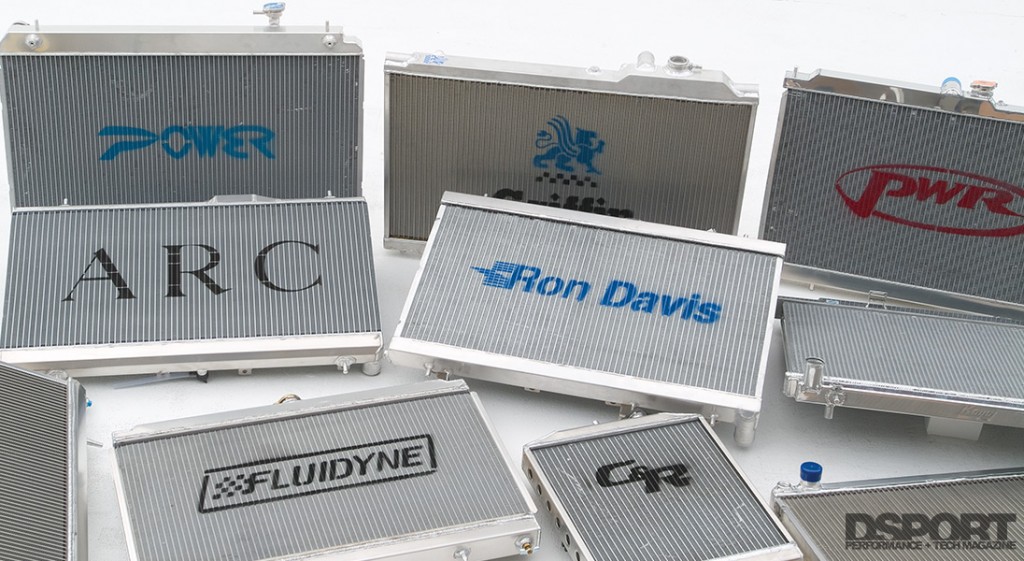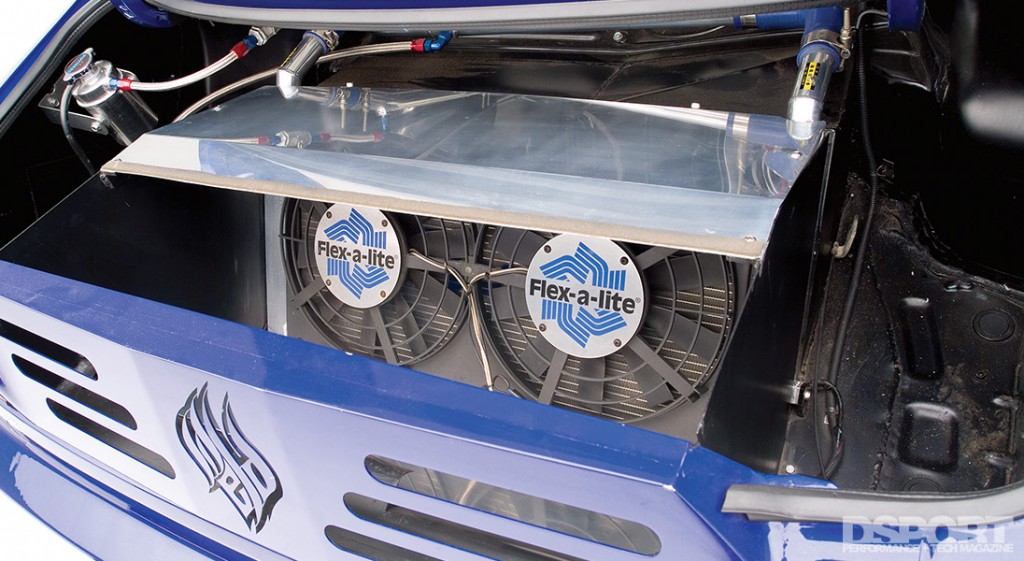Enthusiasts purchase aftermarket performance products for two main reasons: 1) to make the vehicle perform better and/or 2) to improve the vehicle’s toughness and reliability. For some enthusiasts, it’s all about performance; for others, reliability is the key. However, the vast majority of tuners address both performance and reliability in the tuning process. If you only address one of the two elements you end up with a fast car that’s very unreliable or a bulletproof vehicle that has lackluster performance. During the tuning process, an often overlooked but extremely important consideration is the vehicle’s cooling system. Whenever engine performance levels are increased (more horsepower is being made), the burden of the cooling system increases. This issue, we take an in-depth look at one of the critical components in the cooling system: the radiator. Understanding its purpose, its function and its design allows a tuner to make an educated decision about choosing the best performance radiator for their vehicle.
By Michael Ferrara
DSPORT Issue #105
Importance of the Cooling System
Less than 40-percent of the heat generated through combustion gets turned into horsepower. Over 60-percent of the heat from the combustion of the air and fuel gets rejected out your exhaust pipe and through your vehicle’s cooling system. In simple terms, if your car originally produced 200 horsepower, the factory cooling system and exhaust system will reject about 300 horsepower worth of heat. When you turbocharge your vehicle and it is producing twice as much power, the cooling system and exhaust system now must reject 600 horsepower worth of heat. Thus, it is easy to see how easy it is to max out the capabilities of the factory cooling system.
Cooling System Overview
Nearly every vehicle has the same basic components in their particular cooling system. First, there is a radiator. Second, there is either an electric or engine-driven fan that pulls or “pushes” air through the radiator. Third, there is a water pump. Fourth, there is a coolant system cap. Fifth, there is a thermostat. Sixth, there are hoses that provide the connections to circulate the cooling medium and finally there is the cooling medium (coolant) itself.
The purpose of the radiator is to reject the heat in the cooling system to the atmosphere. In engineering terms, a radiator is a basic heat exchanger. Heat exchangers are devices where two moving fluid streams exchange heat without mixing. The fans and the complementary shrouding assist in moving air across the core of the radiator. While the fans move the air, the water pump moves the coolant. The water pump puts the coolant in motion as it travels from the engine to the radiator and back into the engine. To keep the system at a desired pressure, the radiator cap keeps the system closed to the atmosphere unless the cooling system pressure exceeds this desired pressure. In most systems, a mechanical thermostat works as a temperature-dependent valve that blocks flow to the radiator when the engine is cold to speed up the engine’s warm up to normal operating temperature. Of course, connections between the various cooling system components must be made (radiator and cooling systems hoses make these connections). Finally, the coolant acts as the transfer medium that carries away the heat from the cylinders and allows it to be rejected out of the radiator.
When to Upgrade?
Every single component on a vehicle is engineered with respect to a given design criteria. Your vehicle’s factory radiator is no exception. Whether its Nissan, Honda, Toyota, Mitsubishi or Subaru, the vehicle manufacturer will contract a company or subdivision to provide the lowest cost radiator that meets the minimum performance criteria. The performance requirements of the radiator are based on the needs of a factory-horsepower engine that encounters the normal challenges of regular use over the period of time that the OEM desires the radiator to function properly. As with any engineered device, the engineer will typically select a radiator that provides a slightly higher performance level than the minimum requires, as a factor of safety. Hence, if you have a new vehicle that is only making 5-to-10-percent more power than stock and you never push your vehicle, you really don’t need to invest in a high-performance radiator. However, if your vehicle is more than four years old or if you are generating over 20-percent more power than stock or if you do any type of track racing, you really need to consider a performance radiator upgrade.
Performance Radiator Considerations
After you understand the benefits of a performance aftermarket radiator, chances are that you’ll be in the market to purchase one for your vehicle. For most applications, you’ll have a number of options. You can narrow your choices by finding which manufacturers offer an application for your vehicle. Be sure to ask if the aftermarket radiator is a direct-fit. If the radiator is not a direct fit, be sure to ask the manufacturer what parts are needed to make the radiator fit. Once you determine which radiator manufacturers have a fit, you need to make sure that the radiator is designed for the use it will experience. Drag racing? High-performance street use? Road racing? Radiators designed specifically for drag racing may be too small for street use. As you may have guessed, radiators designed for road racing will typically have the highest cooling capacity.[pullquote]JUST BECAUSE ONE RADIATOR SEEMS TO BE “BETTER” IN ONE DESIGN PARAMETER DOESN’T MEAN THAT IT WILL PERFORM BETTER THAN ANOTHER RADIATOR[/pullquote]
There are many factors that go into the design of a radiator. In fact, there are complex equations that can determine the optimum design parameters for maximum efficiency. In designing a radiator, the designer can vary a number of parameters: core length, core width, core thickness, number of tubes, tube spacing and fin density, just to name a few. The important thing to remember is that just because one radiator seems to be “better” in one design parameter doesn’t mean that it will perform better than another radiator. It is the combination and balance of all the factors together that will determine the efficiency and performance capabilities of the radiator.



